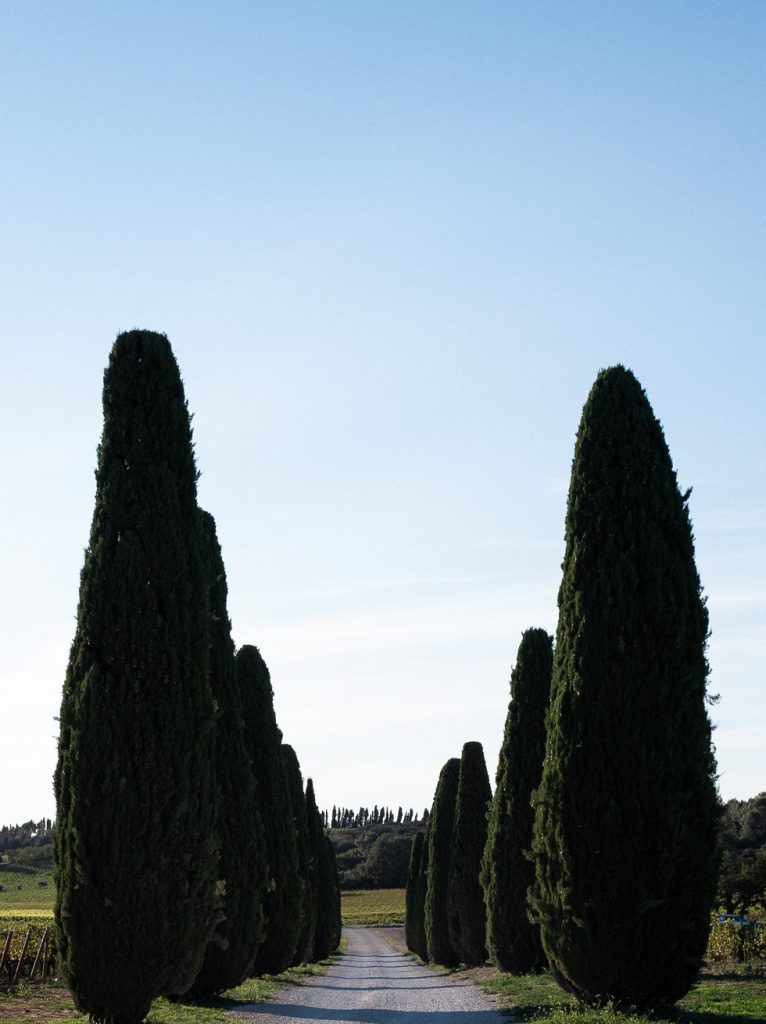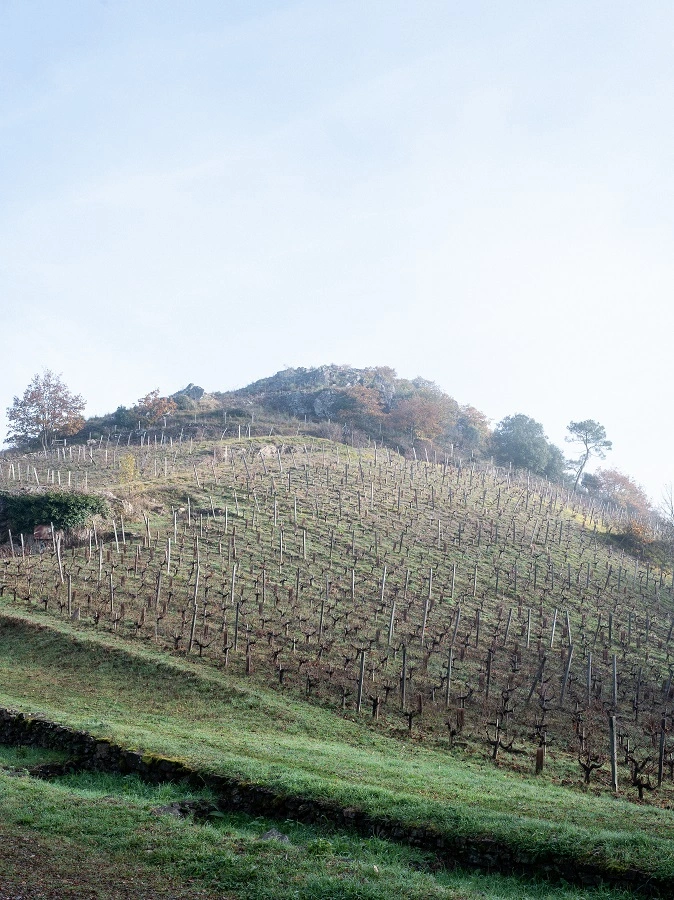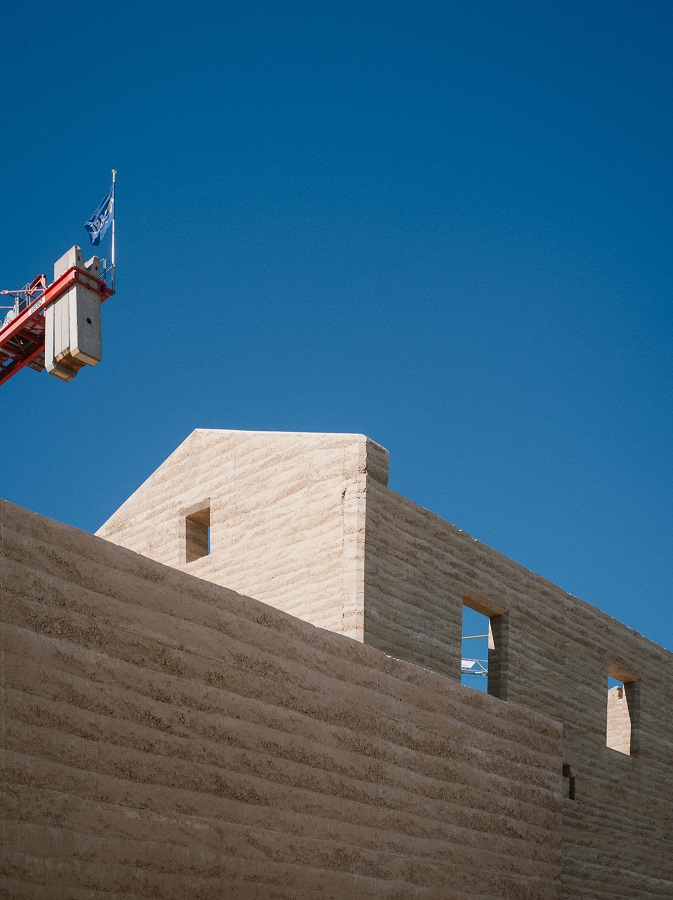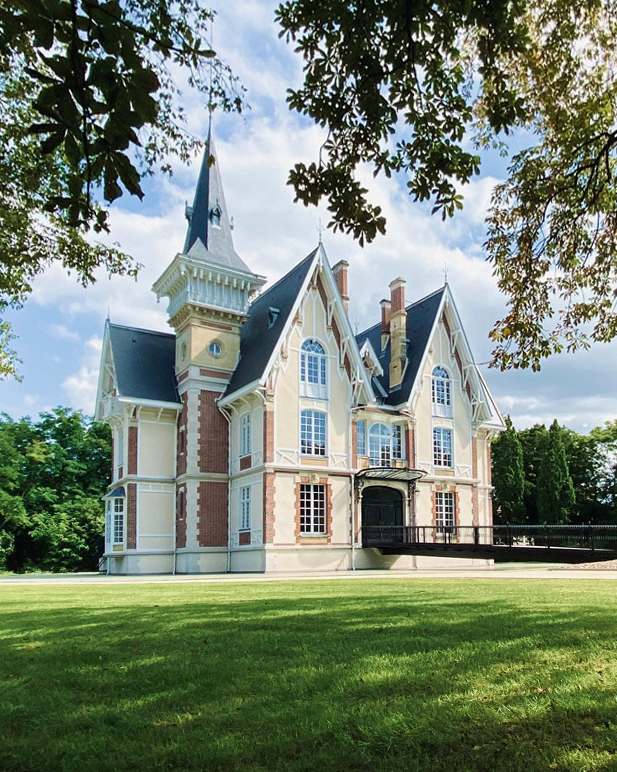Top 10 most beautiful wine cellars
Wine cellars - Discover a BAM selection
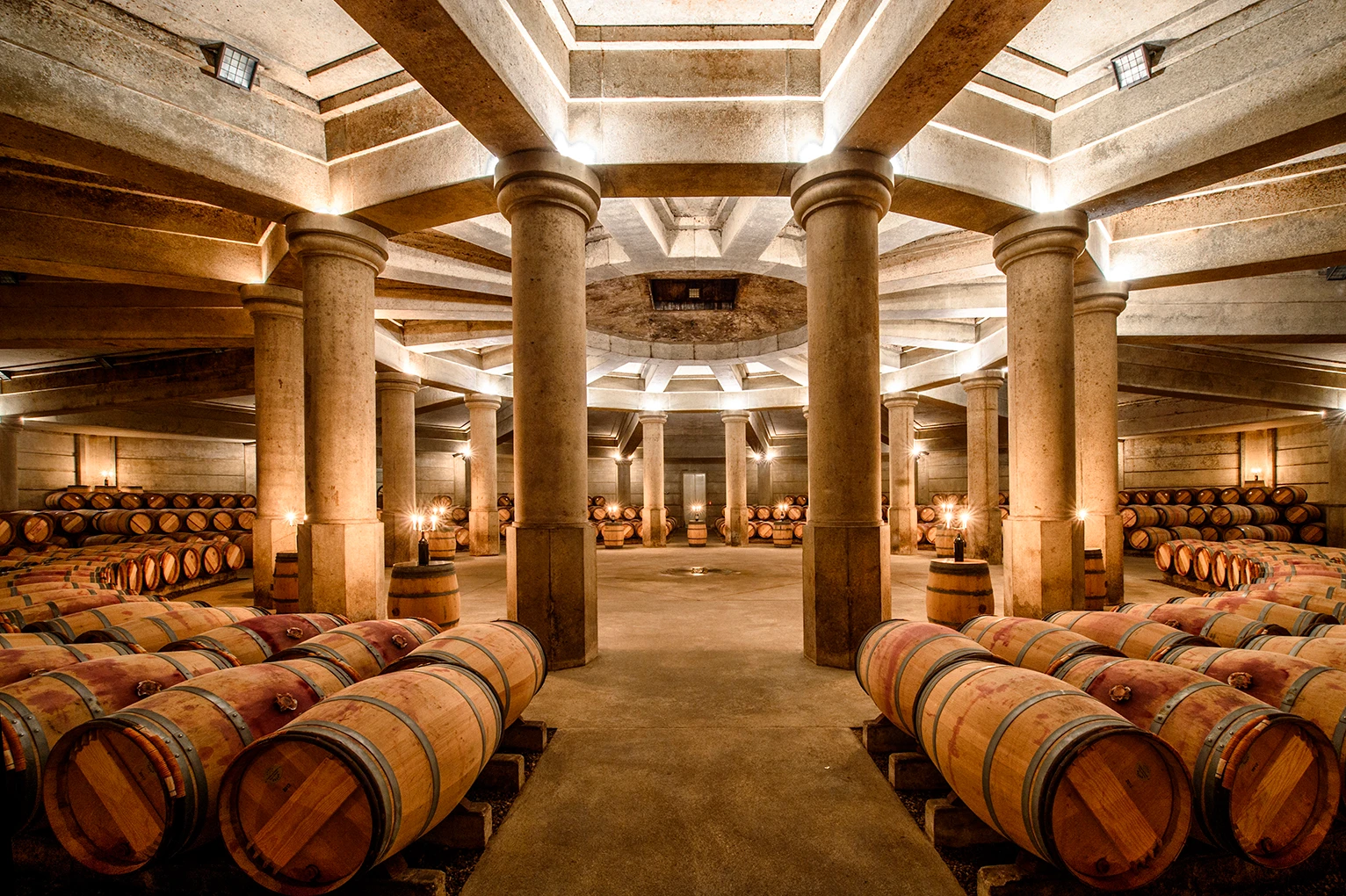

The wine cellar is always the central element of a winery. Some call it a wine cellar, others a storeroom. Among other things, the chai is used for bottle storage... but not only! In fact, the chai is the last place where vinification takes place, in other words, where the magic happens! As a result, many winegrowers decide to call on renowned architects to design this unique space so that it is as technical as it is designer. Ricard Bofill, Jean Nouvel, Chien Chung (Didi) Pei - architects from all over the world, known beyond their borders, are increasingly designing ultra-sophisticated wine cellars in collaboration with winemakers. The aim? To turn this wine production area into a complete experience, complete with tasting room... BAM has selected 10 wine cellars with remarkable architecture. Let's get started!
Contents – Top 10 of the most beautiful wineries :
Wine of Ricardo Bofill of Chateau Lafite
The winery designed byCatalan architect Ricard Bofill for Château Lafite Rothschild in Pauillac is one of the most famous in the world.
Indeed, it was in the early 1980s that Baron de Rothschild commissioned Bofill to design the estate‘s central space.
It is nothing less than the cellar of the Premier Grand Cru Classé 1855.
This avant-garde approach has inspired many estates and wineries, particularly in the Bordeaux region.
Ricard Bofill designed the central structure in an octagonal shape.
What’s more, he succeeded in creating a space with an intimate ambience, measuring over 4,000 m2 (enough to house the estate’s 2,200 barrels!). Finally, the winery is organized around 16 columns that support the entire underground construction.
In this way, the space looks like an ancient temple or sanctuary, providing a hushed setting for the concerts and tastings it hosts.
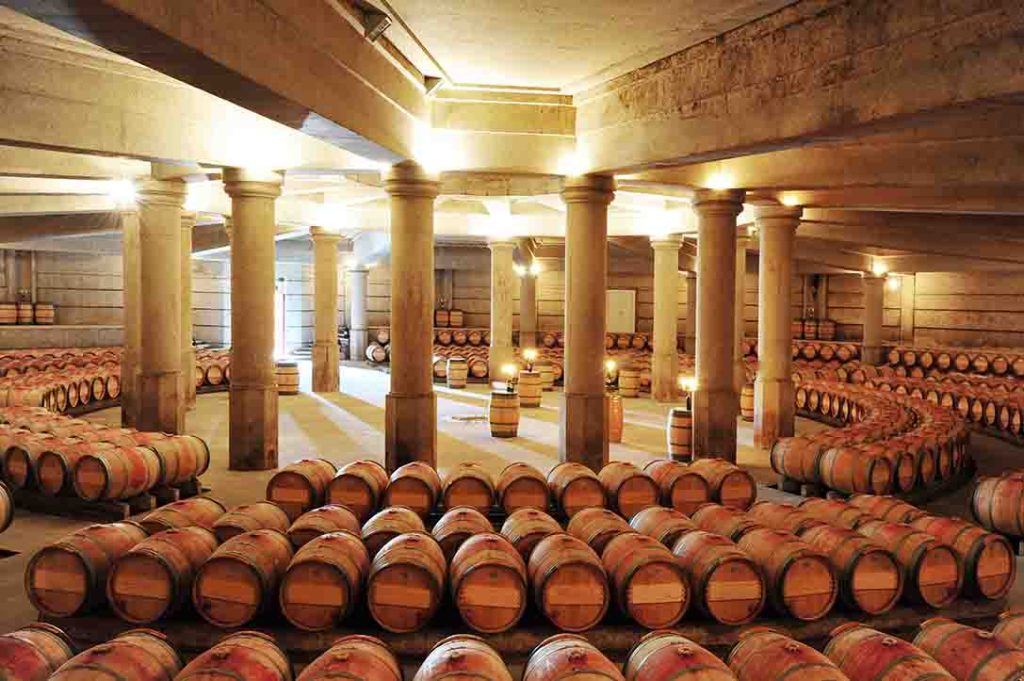

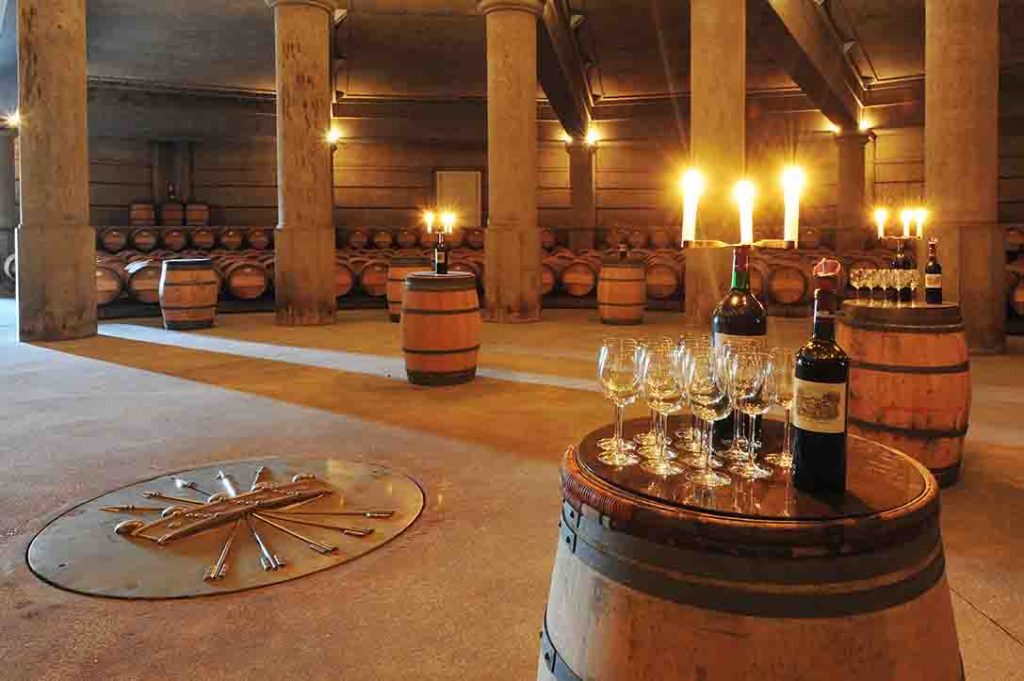



Photo credits: Antoine Lorgnier / Chateau Lafite
How we helped the Rothschild family renovate and extend their winery: Château Lafite Rothschild .
Discover the projectCarl Fredrik Svenstedt the wine of the House Delas Frères
In the village of Tain l’Hermitage, in the heart of the Drôme region, the Maison Delas Frères winery was inaugurated in 2020.
Designed by Parisian architect Carl Fredrik Svenstedt, who specializes in wineries and wine cellars, it pays homage to the terroir of Tain l’Hermitage.
In fact, the vat room and wine storehouse are sheltered by an immense concrete veil over 80 metres long.
What’s more, this gigantic, pleated creation echoes the undulating terraces of the Drôme region’s hillsides.
Made entirely of limestone, this façade is crafted from Estaillades stone (Luberon).
Finally, this massive self-supporting structure watches over the rest of the building. It features large bay windows, a granito floor, oak furniture and concrete structures.
As a result, visitors pass through an outdoor passageway, allowing them to see the entire winemaking process. To round off the visit, they can reach a green roof offering a 360° view of the terraced hillsides of this Rhône Valley region.
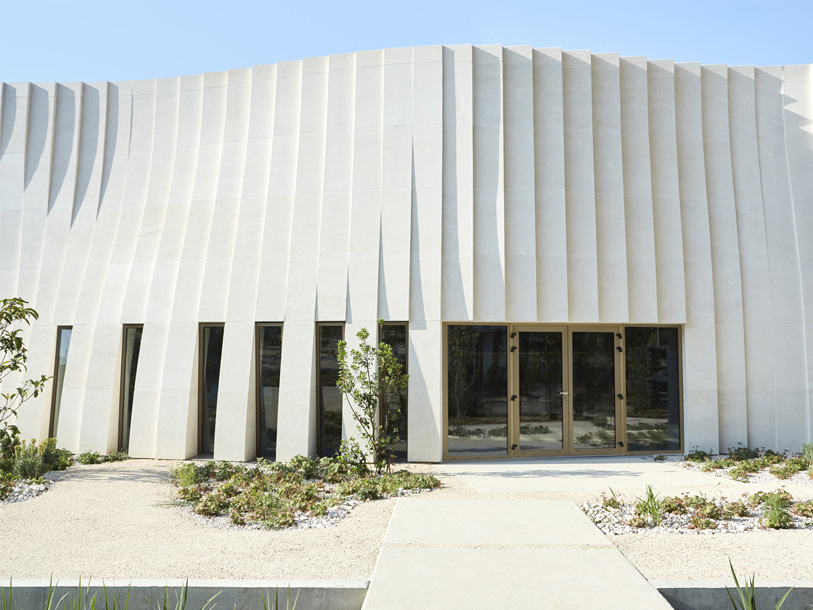

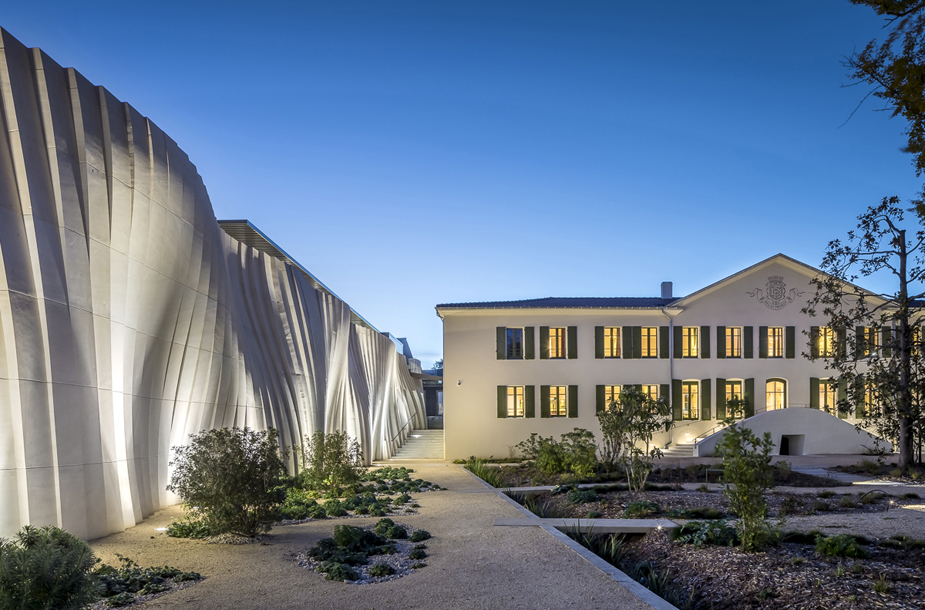

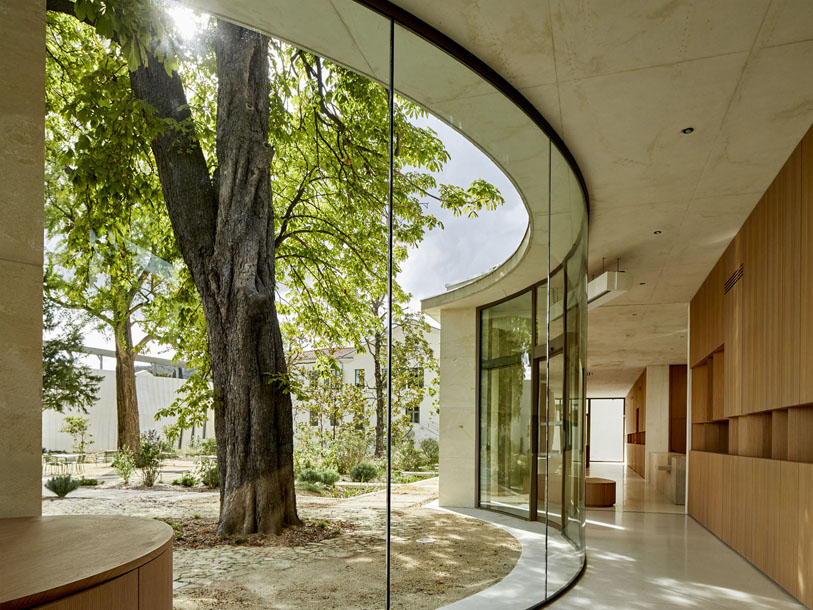

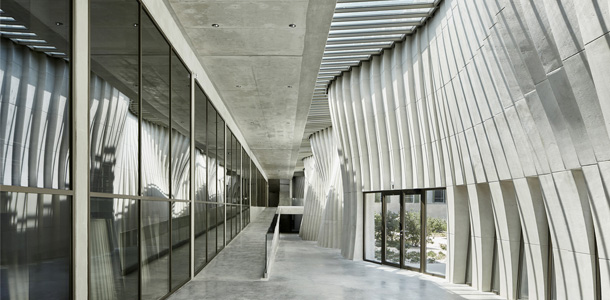

Photo credits: Dan Glasser
Château Les Carmes Haut-Brion
The only vineyard to be part of the Bordeaux commune, the Haut-Brian vineyard now opens onto the city with the Château Les Carmes Haut-Brion estate.
Philippe Starck and Bordeauxarchitect Luc Arsène-Henry have been entrusted with the estate’s architecture.
Some see the winery as an iron blade, a flying saucer or a submarine rising from the water.
What is certain, however, is that behind this wall of steel and minimalist design lies a very modern and surprisingly sober approach.
In fact, more than 2,000 m² on 4 levels are hidden within this astonishing shell.
These house vats hand-painted by various artists.
Each one adds warmth and soul to the place, and gives the winery the appearance of an art gallery.
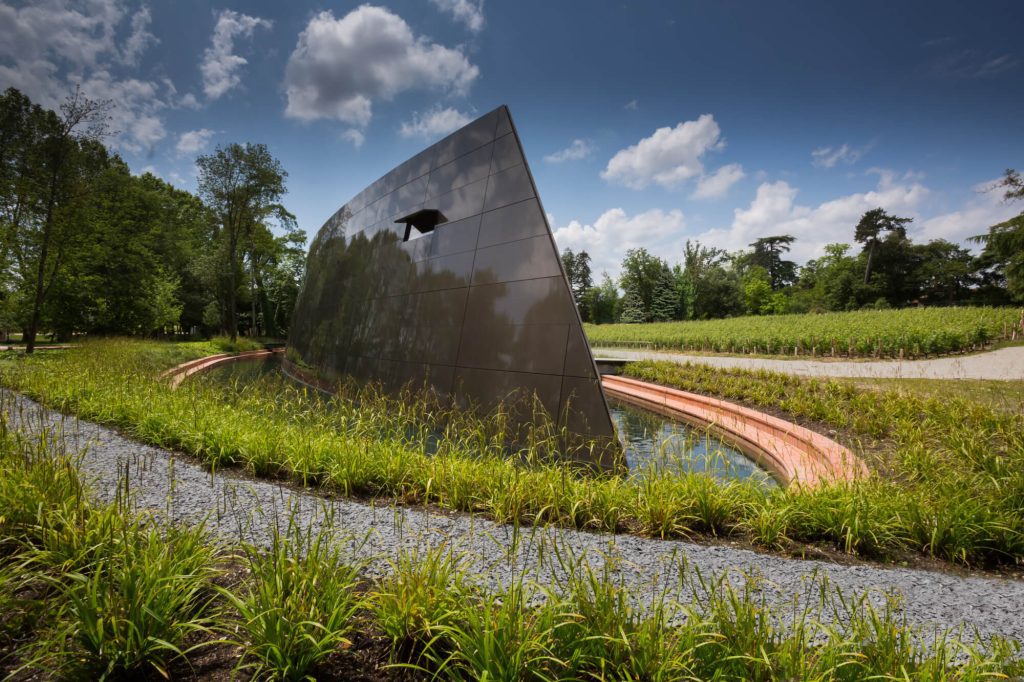



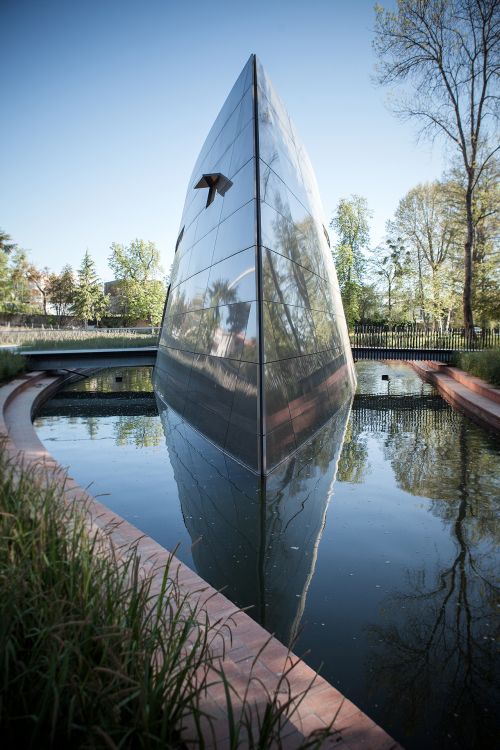



Photo credits: Château Les Carmes Haut-Brion / LAH/AT
Chai logistique Ballande et Méneret, Ludon Medoc
On the road to the Médoc, not far from the Musée du Vin et du Négoce and the Cité du Vin, stands this incredible logistics winery: the Ballande et Méneret logistics winery.
Spanning more than 10,000m2, the winery houses over 4 million bottles.
The monochrome white concrete block, designed by the Baggio et Piéchaud architectural firm, is astonishing in its elegant simplicity.
The chai stands in the middle of an ornamental water mirror.
It gives the impression that this imposing concrete block is floating lightly in the middle of the forest.
Finally, it’s at nightfall that the chai reveals another enigmatic facet of its building, thanks to a surprising play of lights.
Double lighting, alternating inlaid LEDs and spotlights, emphasizes the building‘s geometric lines.


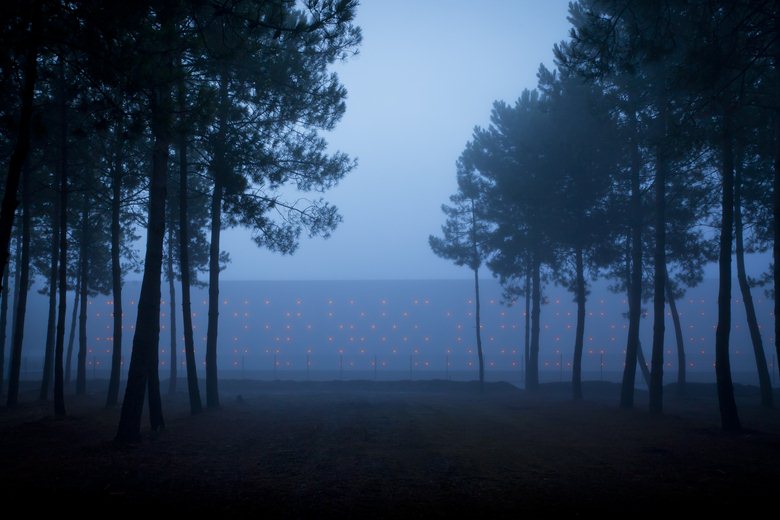

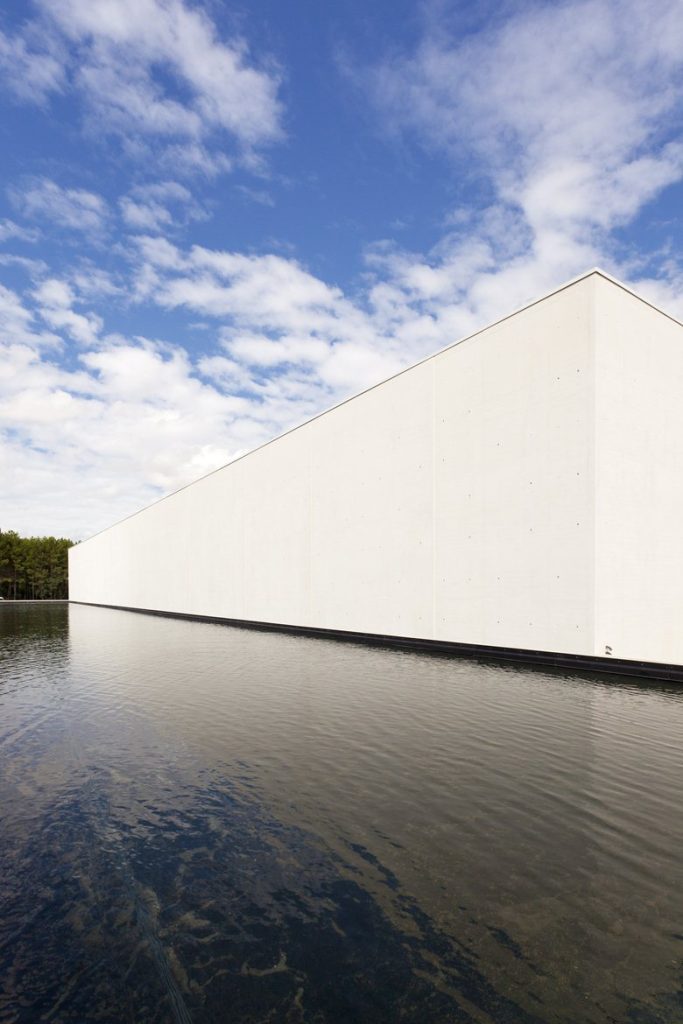

Photo credit: Arthur Péquin
Chai du chateau montrose
In a slightly more traditional, but very impressive style, we decided to include the Château Montrose winery in Saint-Estèphe , Bordeaux, in our top list.
The 18th-century winery was renovated by Atelier Bernard Mazières in Bordeaux, a specialist in winegrowing renovations.
The aim was to bring a touch of modernity and optimize wine-making and storage conditions . At the same time, the aim was to preserve the classic Bordeaux style of the great wine cellars.
As a result, it is in a sober, classic spirit, with an almost monastic atmosphere, that the large 1000m² cellar houses the Grand Vin de Château Montrose for 18 months of ageing.
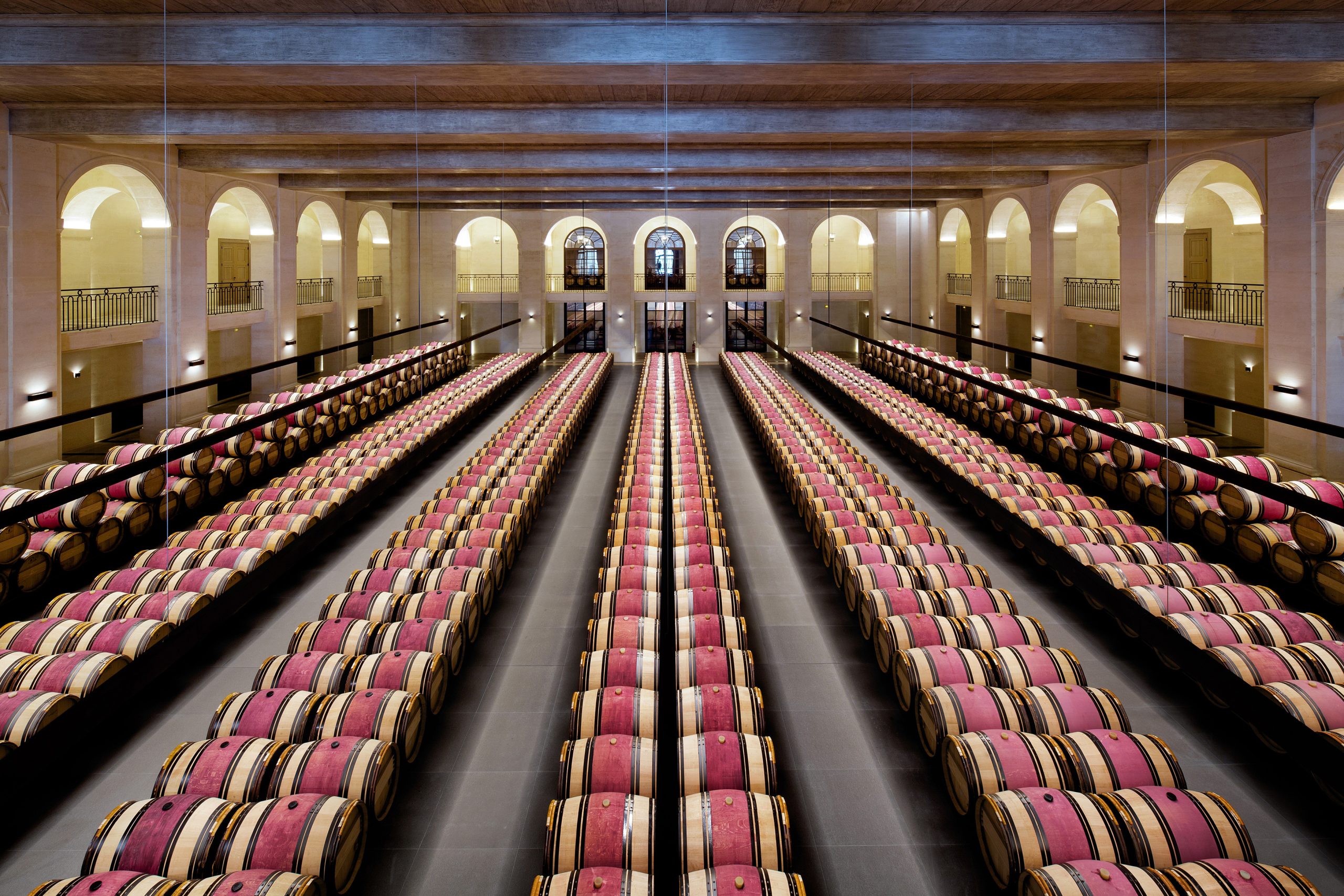

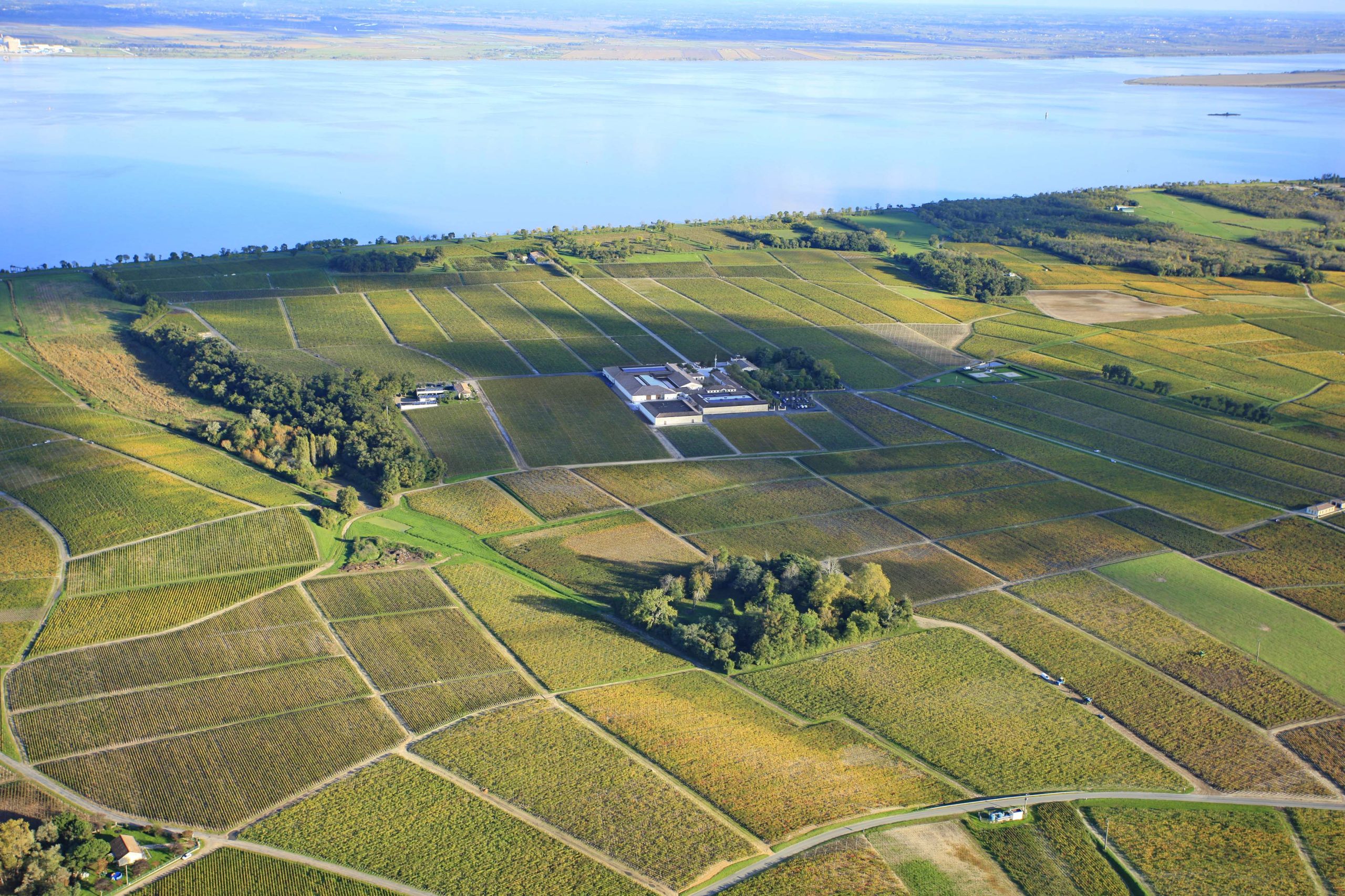

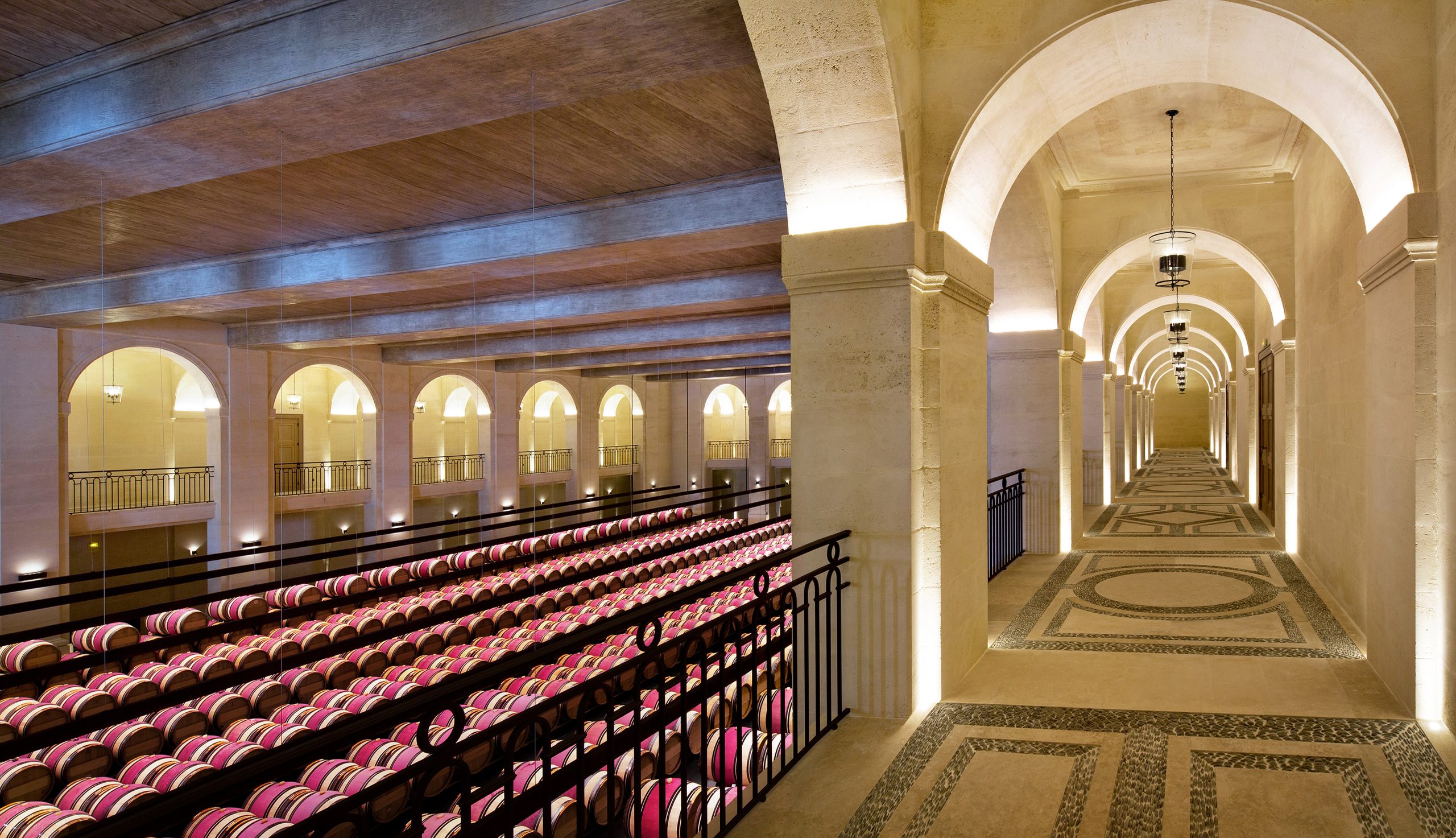

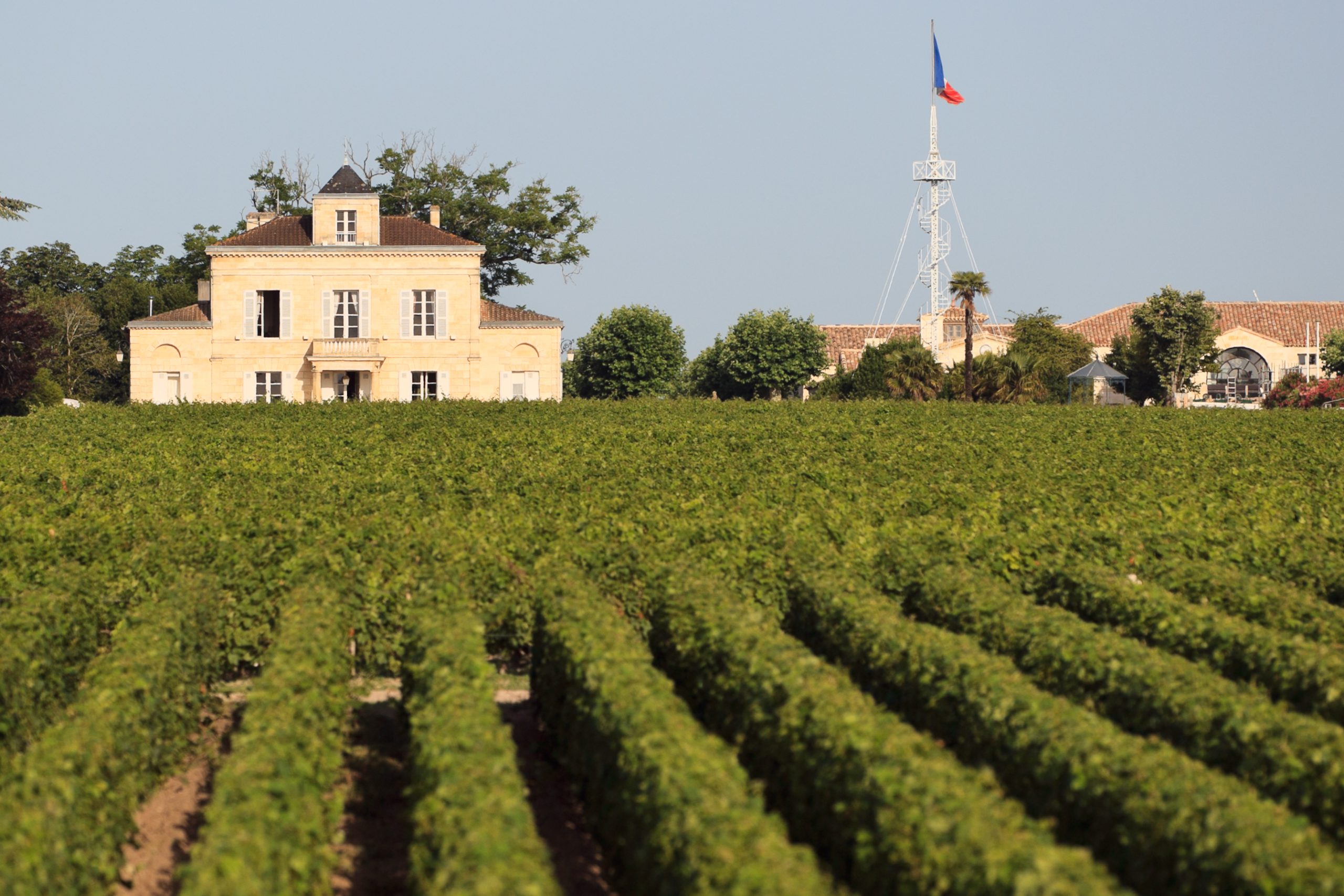

Photo credits: Château Montrose
Domaine Les Davids
Les Davids winery is located in the small Vaucluse village of Viens, on a 20-hectare estate.
The aim of the estate’s owners was to design a winery that respected the gravity-fed vinification process.
In addition, the project had to integrate as harmoniously as possible with its surroundings.
Designed byFrench architect Marc Barani, the concrete building was tinted ochre through the mass.
This gives the impression of a block rising out of the earth.
What’s more, its glass façade offers a magnificent view of the vineyards.
From the outside, a row of concrete tulip-shaped vats can be seen in the building.
In this way, the sobriety of the site and the naturalness of its materials give the winery a timeless aesthetic.
Finally, the magnificent fresco created by Marc Barani, the site’s architect, magnificently enlivens the entrance to the winery.
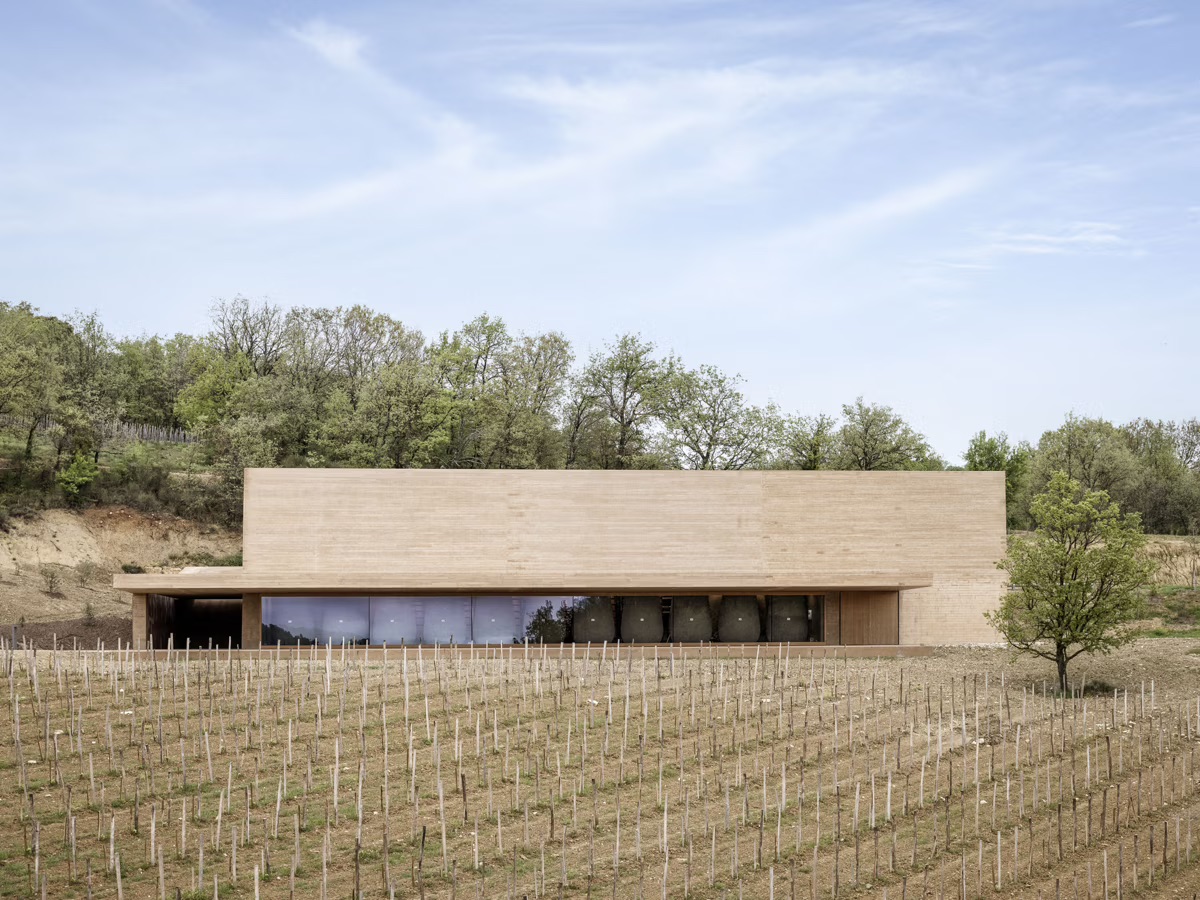

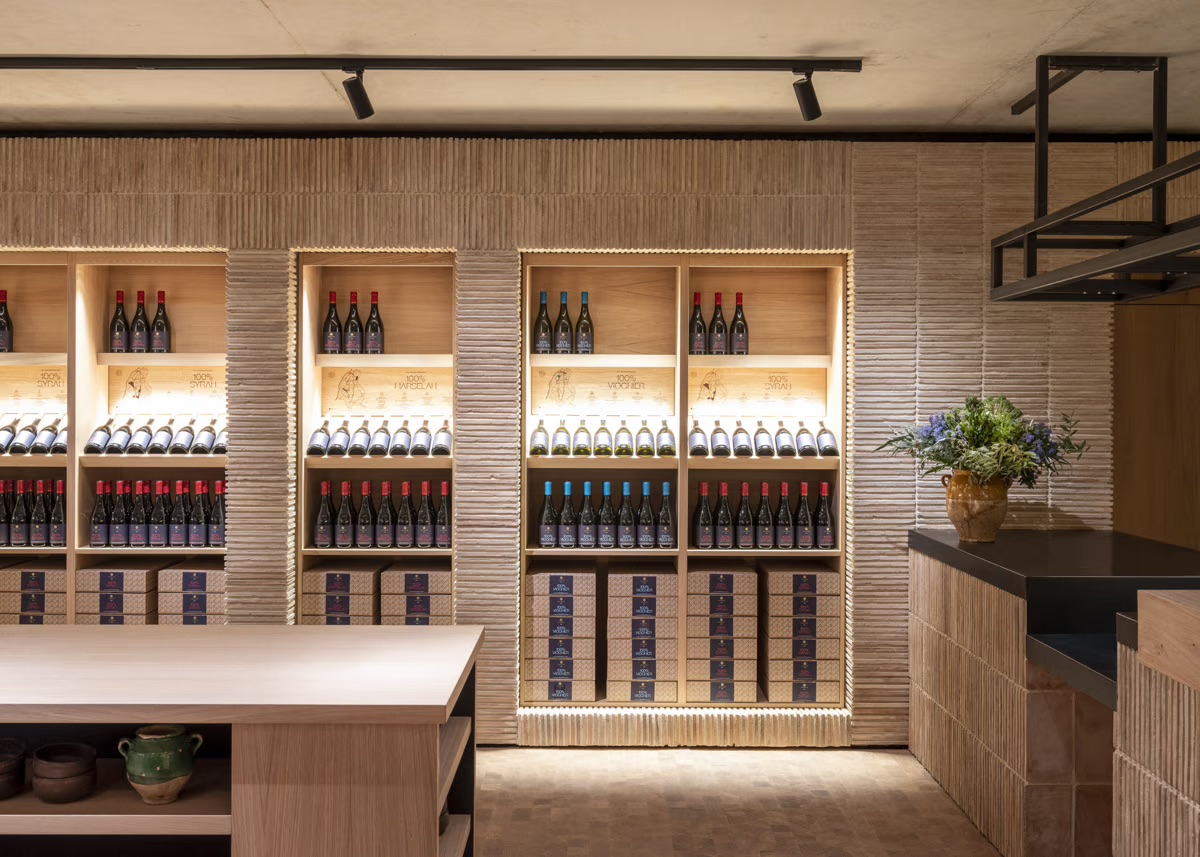

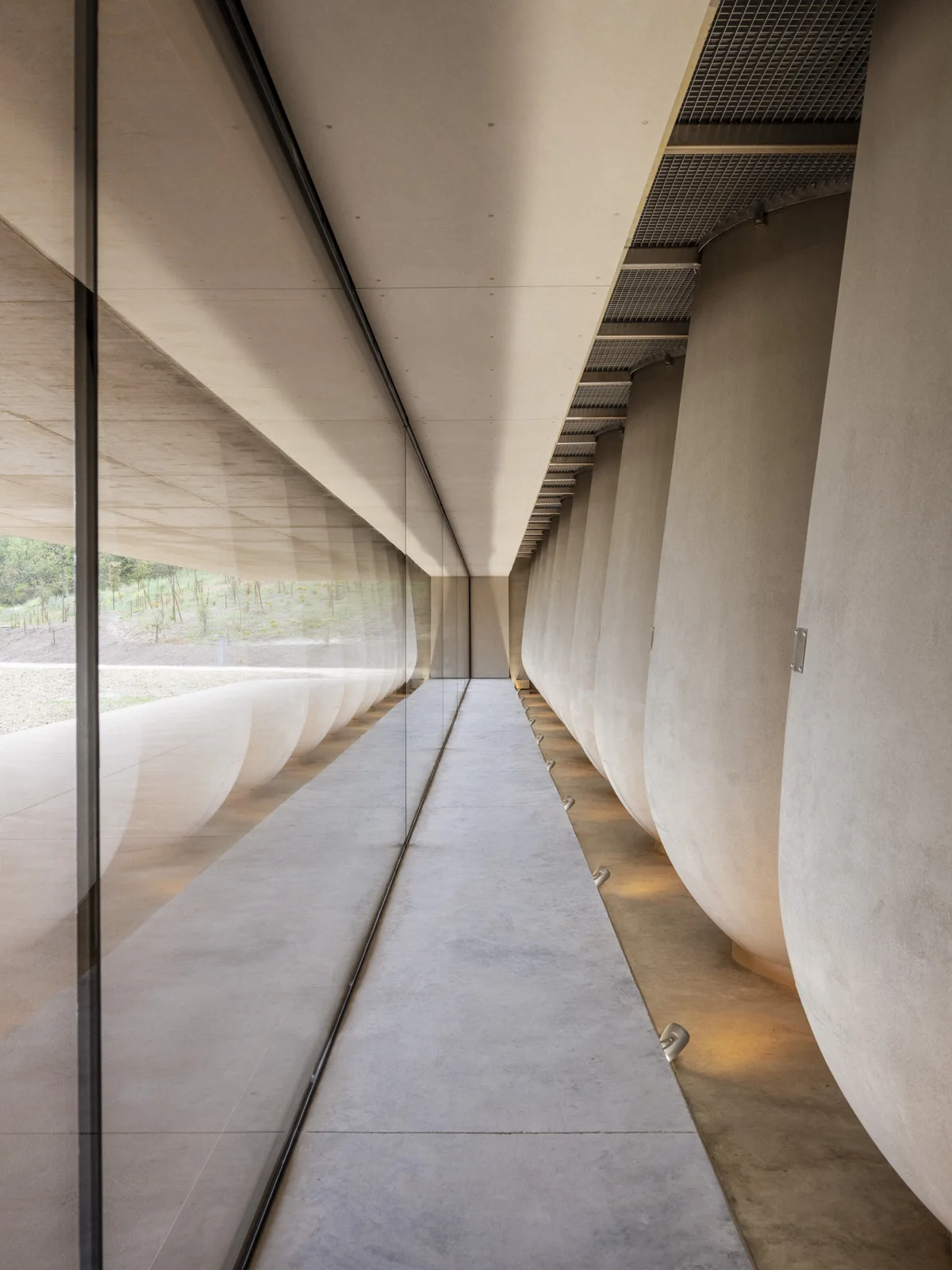

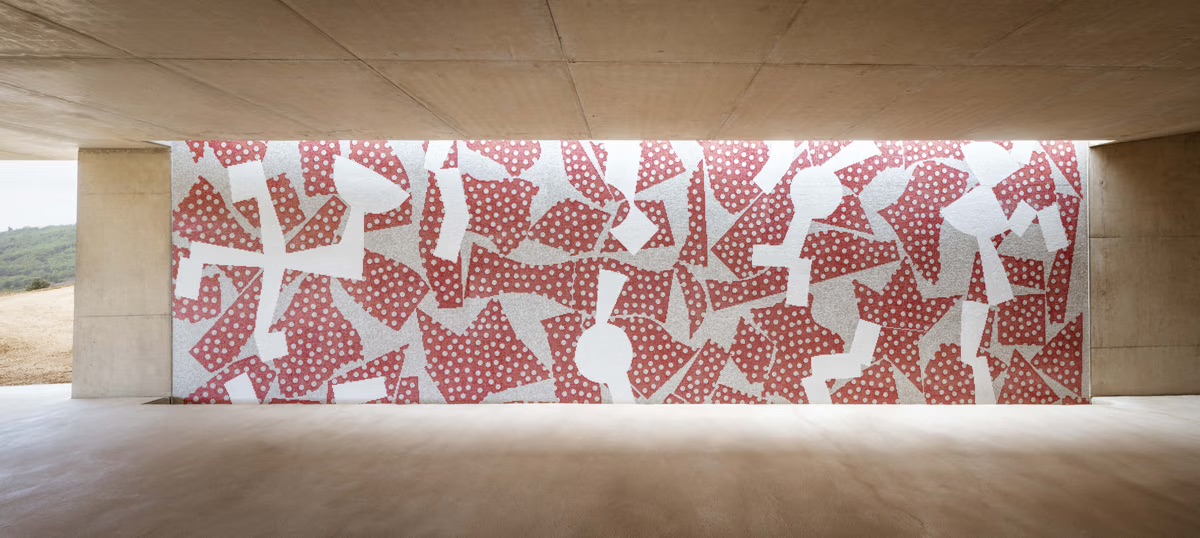

Photo credit: Frederik Vercruysse
Vous avez un projet de construction ou rénovation de chai viticole ?
Château La Dominique Saint Emilion
This is one of the most talked-about wineries in the Bordeaux region: Château La Dominique in Saint-Emilion, designed by Jean Nouvel.
The winery is the result of a skilful balance between winemaking tradition, Russian art and cutting-edge technology.
The aim?
To create a strong identity among the other great wine cellars and neighboring estates (Cheval Blanc, Figeac…).
This ambition gave rise to the idea of a new body emerging from the building.
The pure lines of this extension of mirrors and horizontal polished and varnished stainless steel slats in dark red create a floating effect above the vines.
What’s more, the color chosen pays homage to the flagship color of the wine produced on the estate.
Finally, the cellar is covered by a panoramic terrace with a floor strewn with coloured stones that evoke the grapes of Château La Dominique.
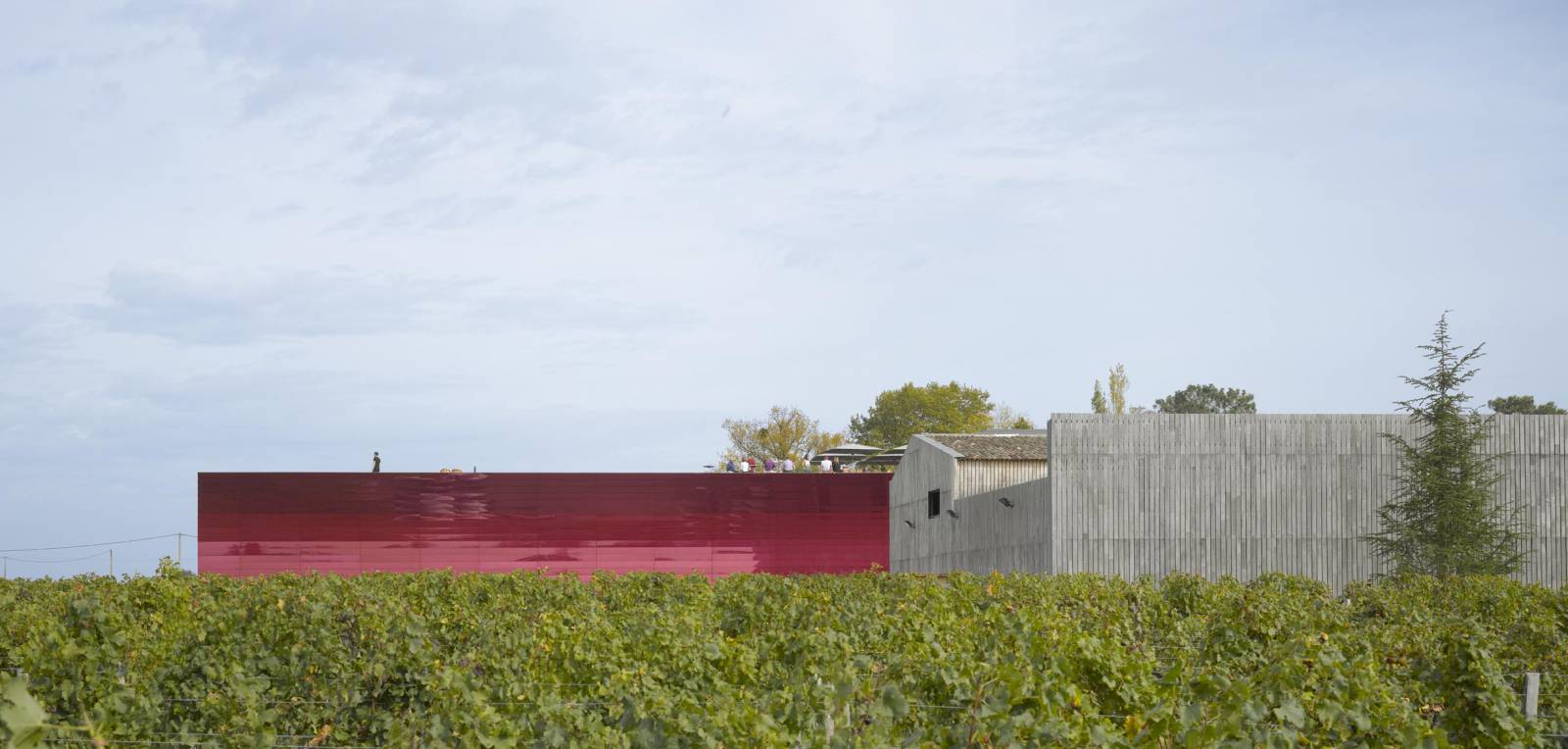



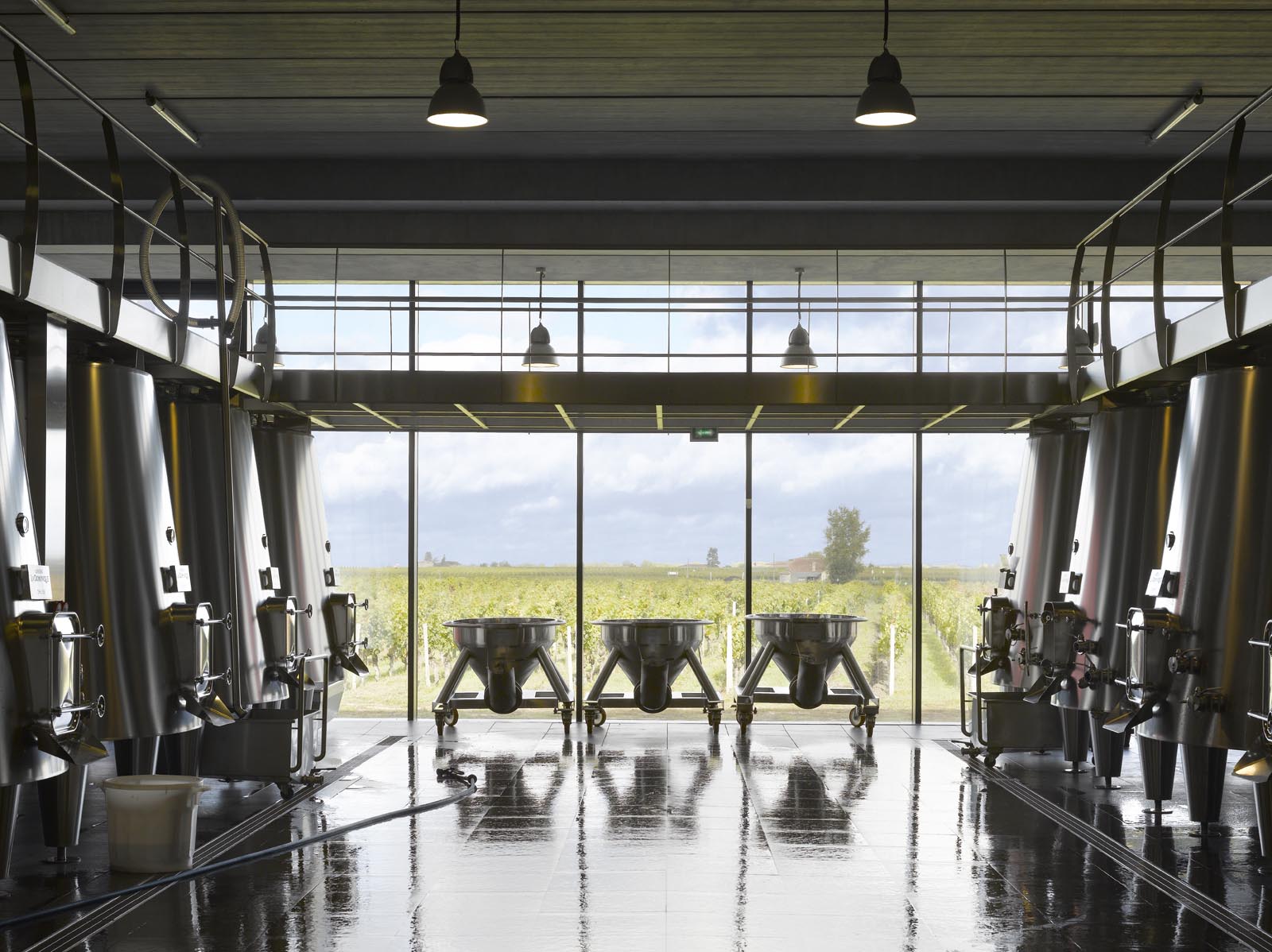



Photo credit: Atelier Jean Nouvel
Rocca di Frassinello
This winery in Italy’s Upper Maremma, near Gavorrano, is one of the leading examples of a winery ‘s association with star architects.
Italianarchitect Renzo Piano designed the winery.
The aim was to bring together under one roof the unprecedented collaboration of two world-renowned vineyards: Castellare di Castellina and Barons de Rothschild-Château Lafite.
This is the only winery in the world designed by Renzon Piano, better known for his museums and cultural centers (Centre Pompidou, The Shard, The Art Institute of Chicago…), and it’s no coincidence!
Indeed, the highly contemporary building is designed as a “church of wine“, in the words of thearchitect.
As such, it features an Etruscan art museum-like pathway to discover the know-how of that era.
In its small agora, the winery hosts concerts and cultural events throughout the year.
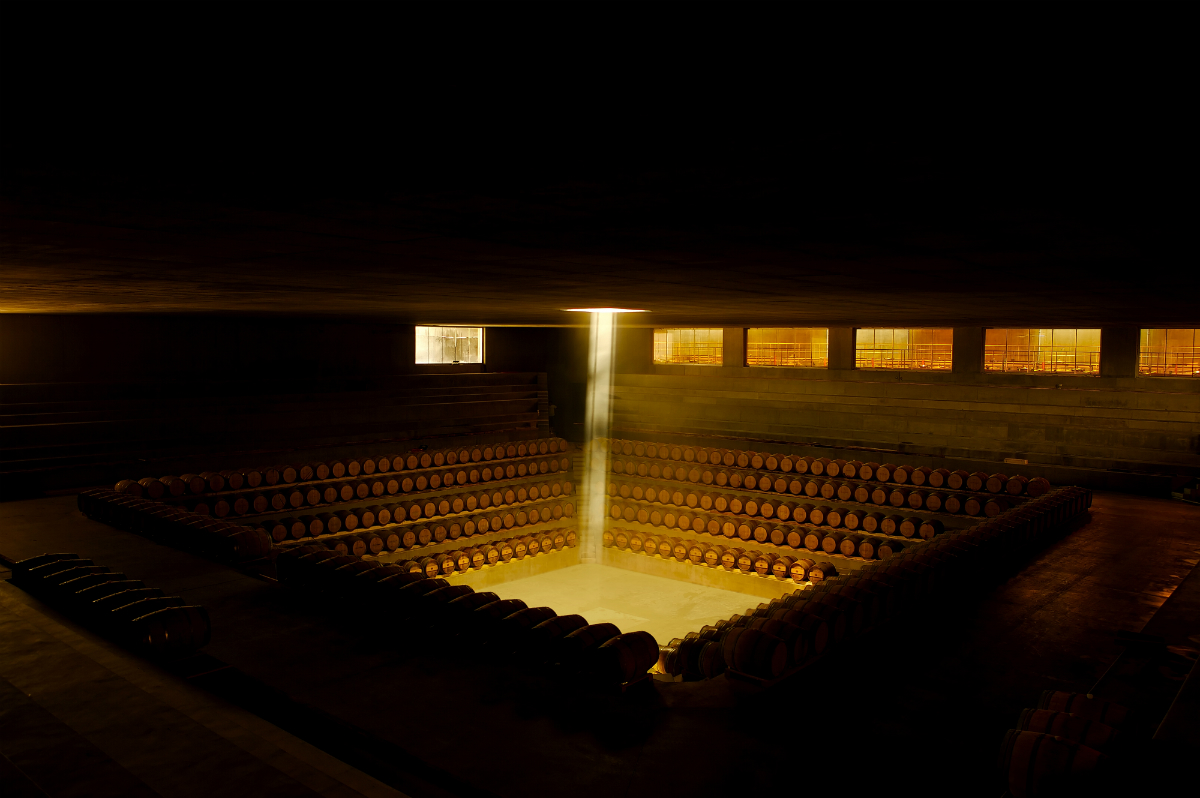

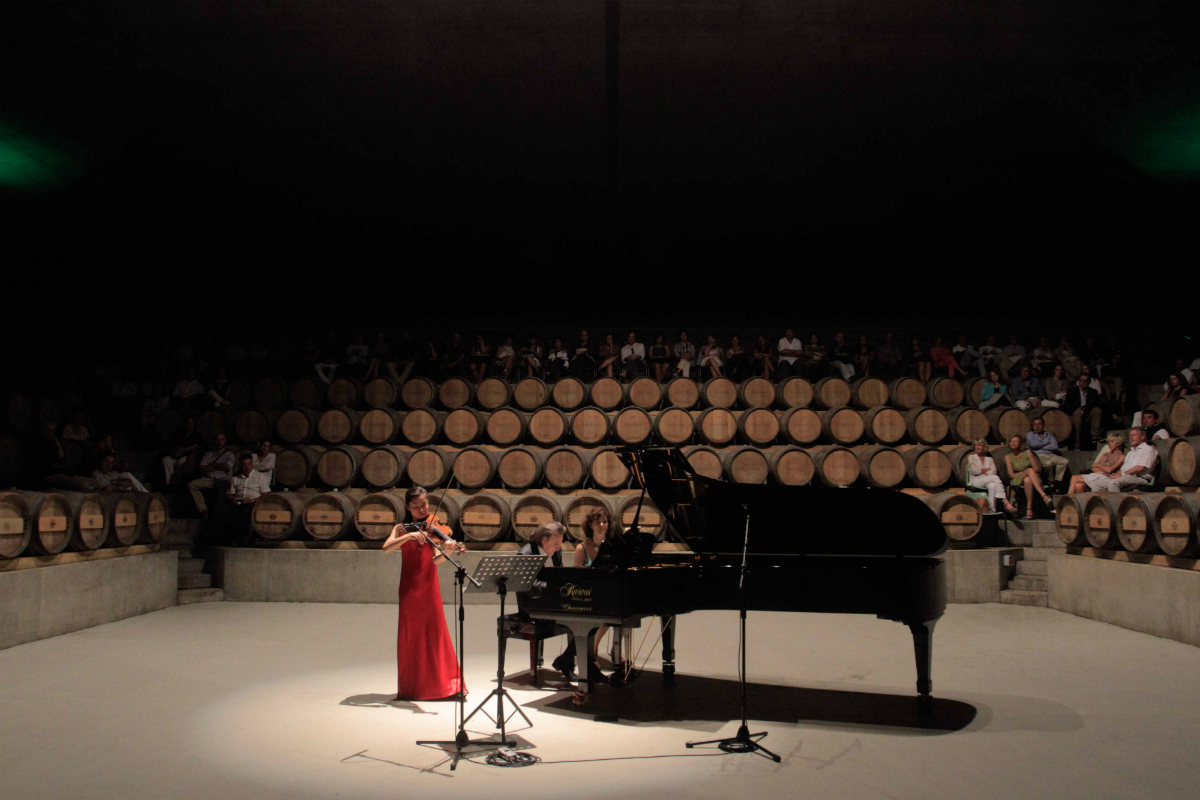



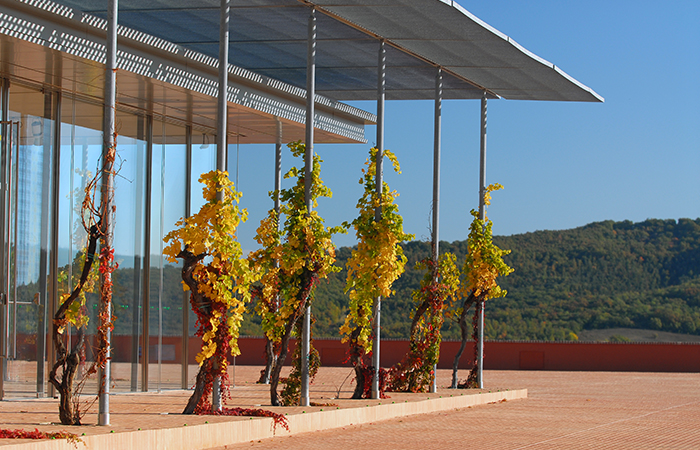

Photo credits: Castellare
Château Pavie Macquin Winery
Once again, we find this remarkable winery in Saint-Emilion, at Château Pavie Macquin Winery, Saint-Emilion‘s first Grand Cru Classé.
The project involves the renovation of the Chateau Pavie-Macquin productionunit and the creation of an underground barrel cellar.
The project was entrusted to the Bordeaux architectural studio BPM Architectes.
Their project is part of a fugal design and sustainable development approach.
Their aim?
To minimize the building’s impact on its prestigious environment by adopting an eco-responsible approach to wine cellar renovation.
For this reason, materials were selected for their sustainable nature.
These include wood and concrete.
What’s more, the ageing cellar is made from topsoil extracted from the site during excavation.
It’s a fine tribute to the terroir and richness of the region’s limestone and clay soils.
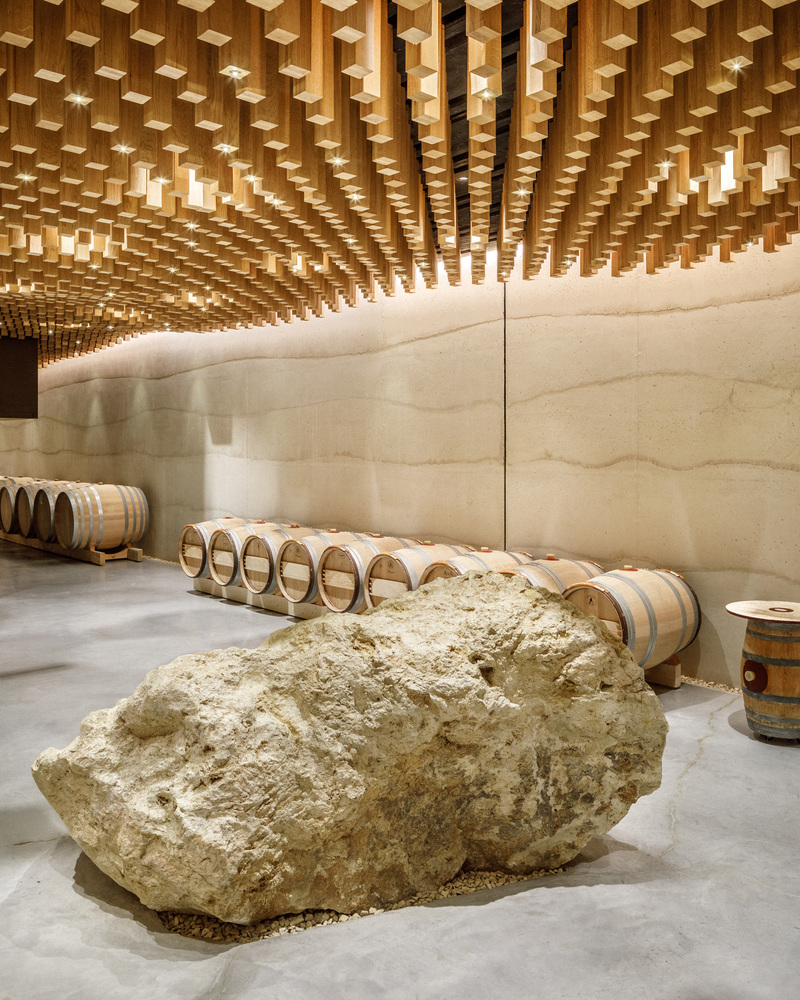





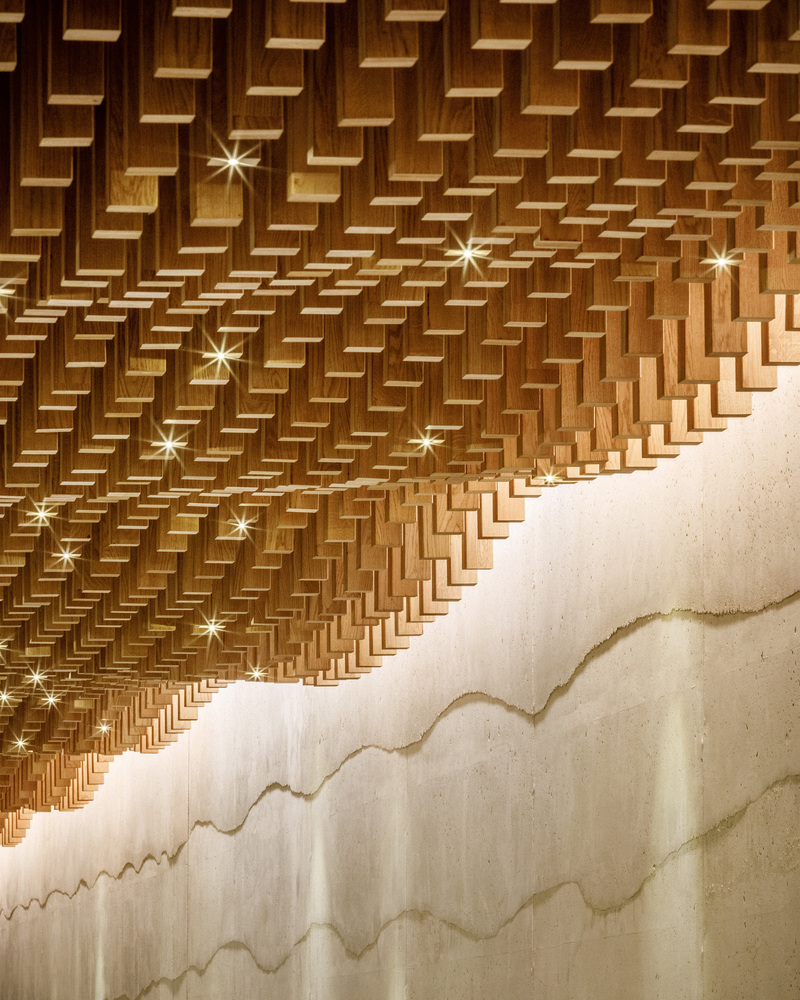

Photo credits: 17h45
Tierra Tinta
The Tierra Tinta winery in the Guadalajara region of Mexico features an unusual winery designed by the Mexican studio COA Arquitectura.
Indeed, with its sawtooth roof made of corrugated iron, the winery stands out like a strange silhouette in this Mexican landscape, close to the nearby Cerro del Muerto mountain.
Indeed, these architectural choices and the use of sheet metal, raw wood and adobe are a tribute to the agricultural buildings of this region. In addition, the minimalism of the furniture and the use of wood from old railway tracks contribute to this sober, uncluttered aesthetic.
What’s more, these rails were also used to place the barrels in the storage area.
This creates a platform for the barrels.
The whole creates a unique atmosphere.
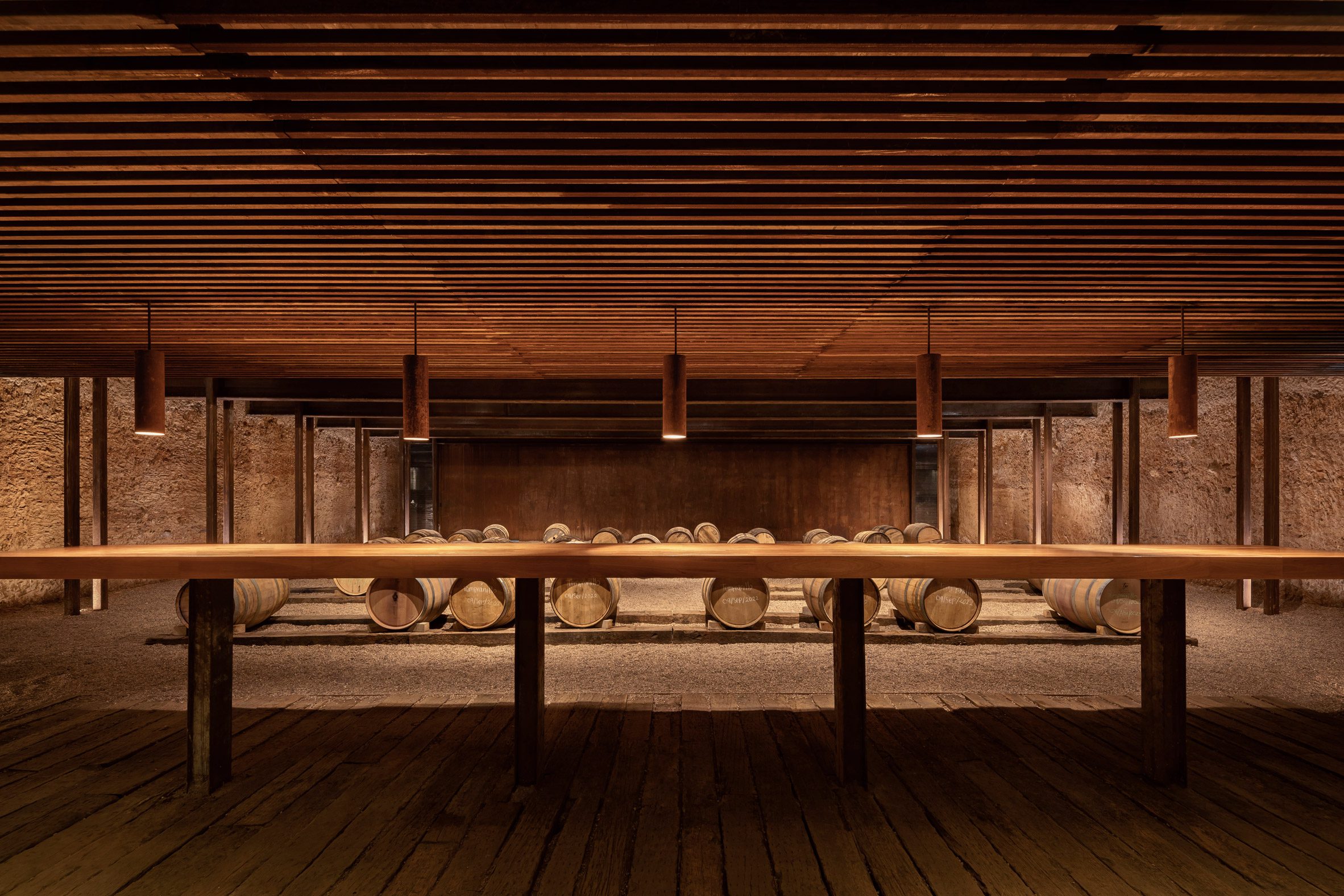

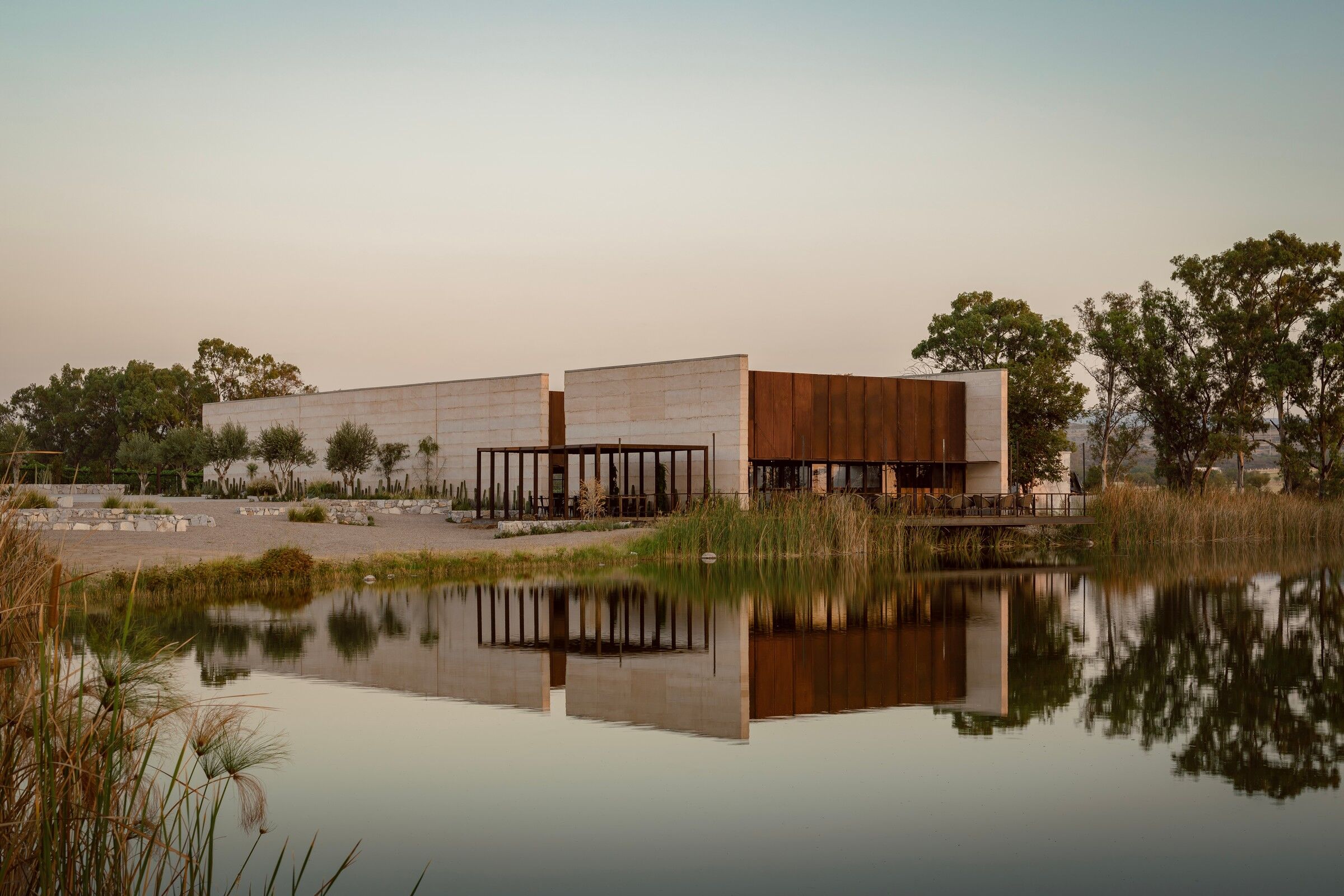

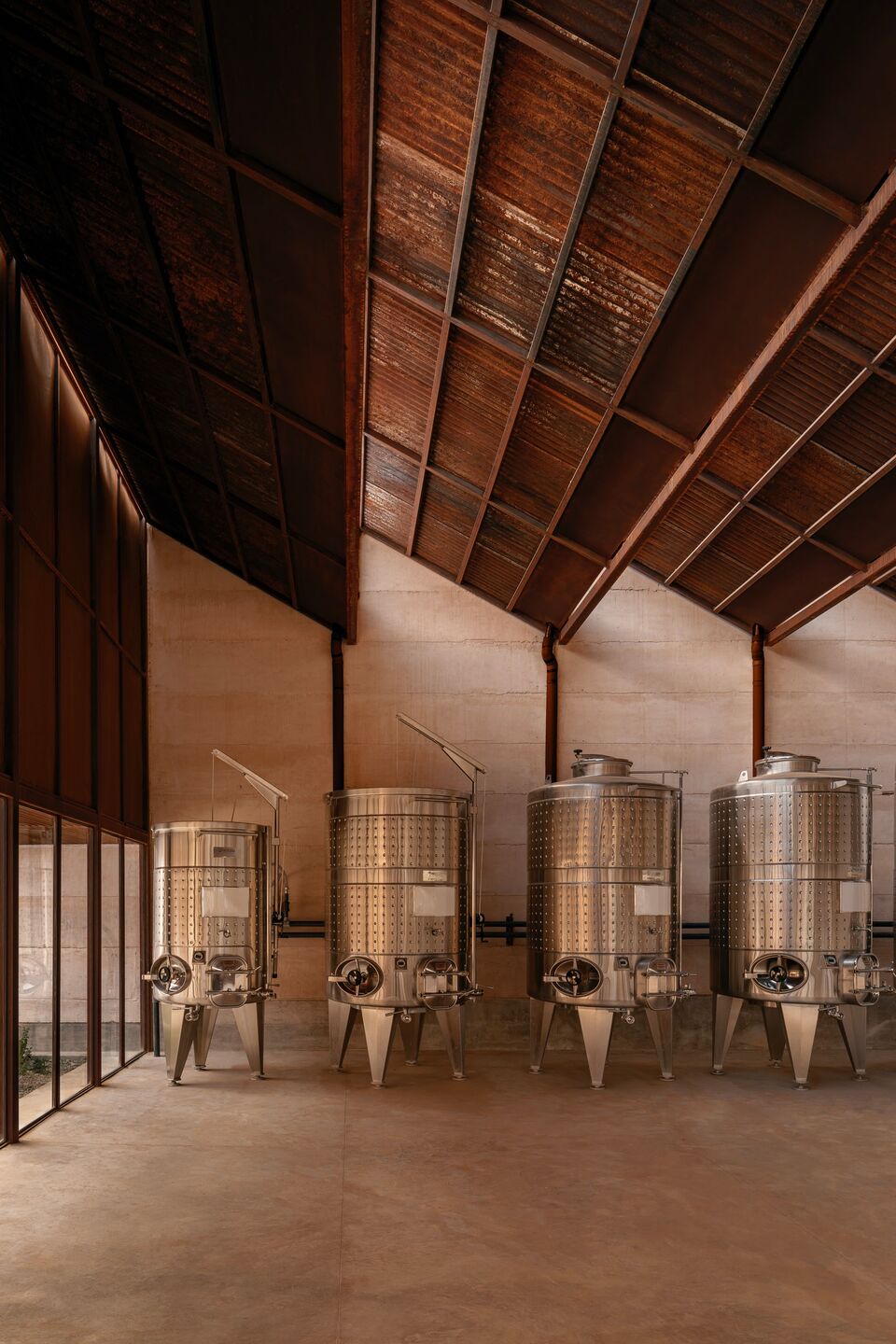

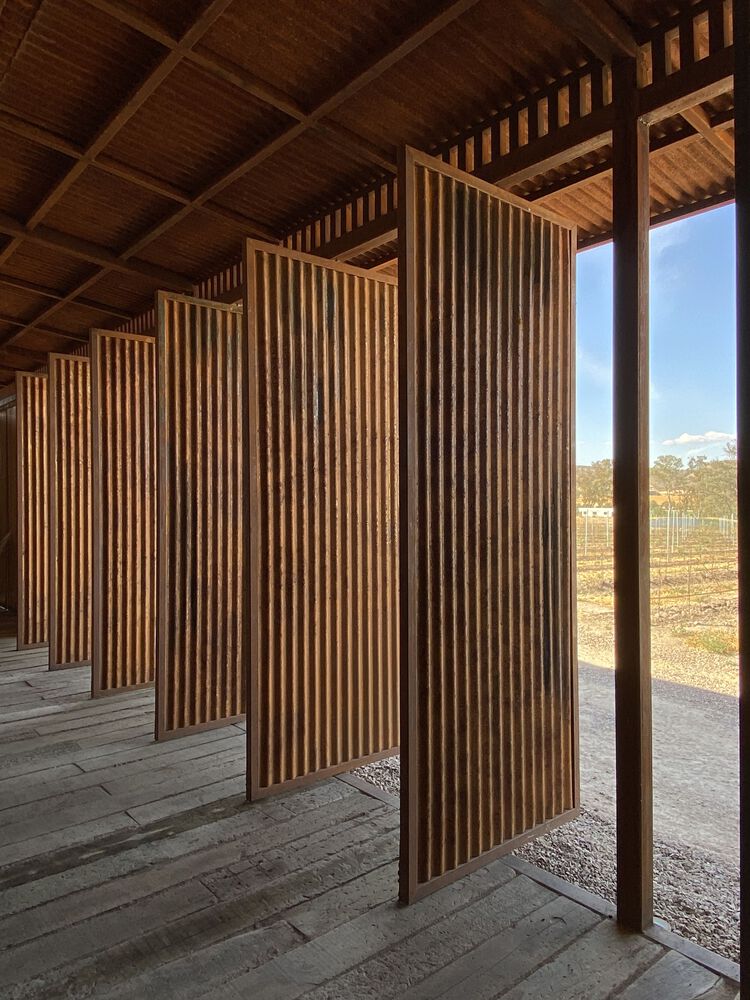

Photo credits: César Béjar
Our winery projects,
Find out more about our current projects and the stories of the clients we’ve worked with on their winery construction or renovation projects.
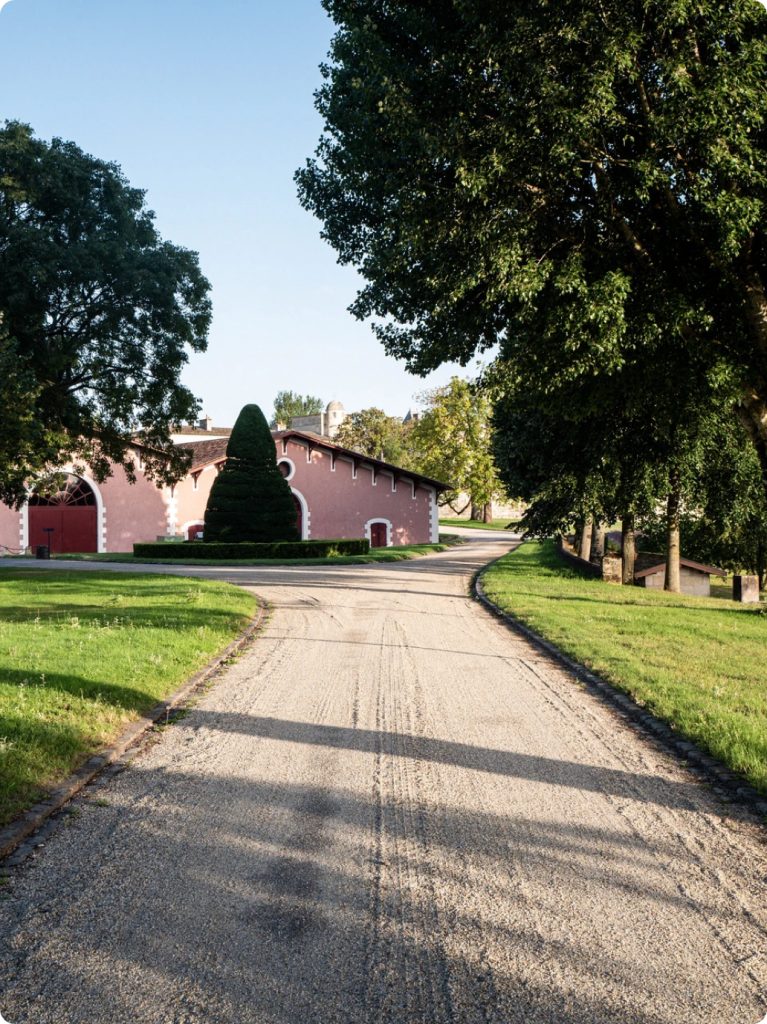

Château Lafite Rothschild: Renovation and extension of a winery
Delivery in 2025
Château de Nalys: Renovation and extension
Delivery in may 2026


